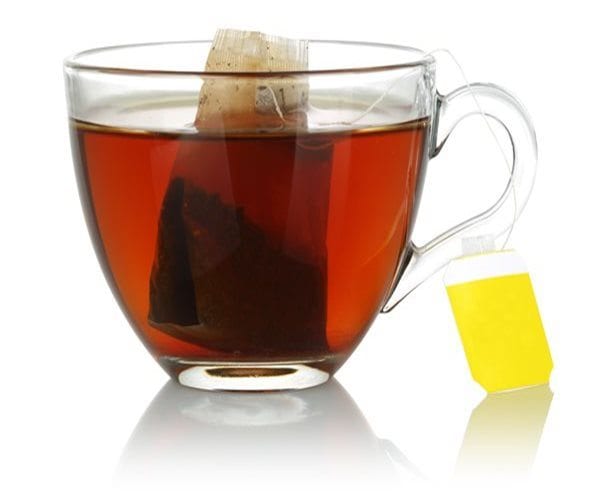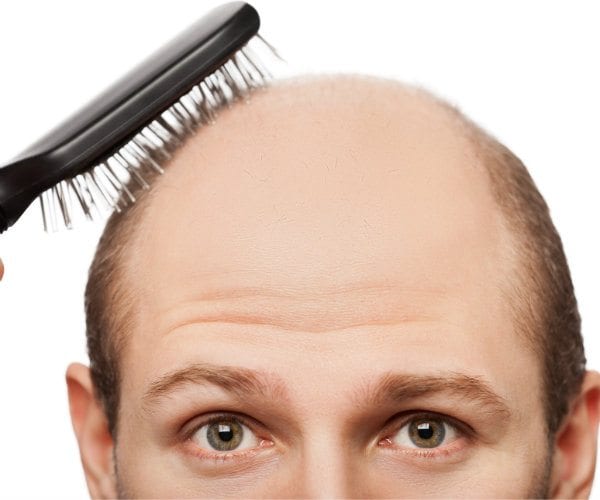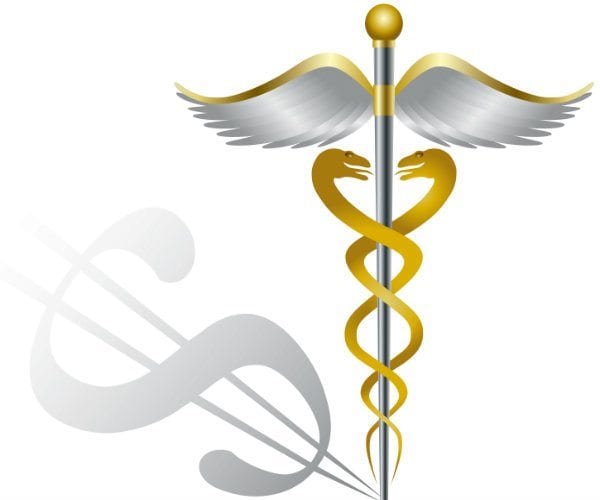Anti Aging
Back Clinic Anti Aging Chiropractic and Functional Medicine Team. Our body is in a constant and never-ending battle for survival. Cells are birthed, cells are destroyed. Scientists estimate that each cell must withstand over 10,000 individual assaults from reactive oxygen species (ROS) or free radicals. Without Fail, the body has an incredible system of self-healing that withstands the attack and rebuilds what has been damaged or destroyed. This is the beauty of our design.
To understand the biology of aging and translate scientific insight into interventions that improve late-life health through treatments. It is useful to have a clear, consensus view on what exactly constitutes anti-aging treatment.
Since before the days of Ponce de Leon’s search for longevity, man has always been enticed by the chance of eternal youth. Chiropractic care with its health movement is a powerful method of stabilizing and enhancing this self-healing ability. Dr. Alex Jimenez discusses concepts surrounding the anti-aging pandora.
.

by Dr Alex Jimenez DC, APRN, FNP-BC, CFMP, IFMCP | Anti Aging
A cup of tea a day can keep dementia away, according to a study from the National University of Singapore, which found that tea can slash the risk of dementia in people aged 55 and older.
Drinking tea cuts the risk of cognitive impairment in older people in half, but the news is even better for those who are genetically at risk of Alzheimer’s. In people who carry the APOE e4 gene, tea reduces the risk by as much as 86 percent.
The researchers also discovered that the ability of tea to protect the brain isn’t limited to a particular type of tea, as long as the tea is brewed from tea leaves, such as green, black or oolong tea.
“While the study was conducted on Chinese elderly, the results could apply to other races as well,” said Assistant Professor Feng Lei from National University of Singapore’s (NUS) Yong Loo Lin School of Medicine.
“Our findings have important implications for dementia prevention,” Feng continued. “Despite high-quality drug trials, effective pharmacological therapy for neurocognitive disorders such as dementia remains elusive and current prevention strategies are far from satisfactory.
“Tea is one of the most widely consumed beverages in the world,” he explained. “The data from our study suggests that a simple and inexpensive lifestyle measure such as daily tea drinking can reduce a person’s risk of developing neurocognitive disorders in late life.”
“Based on current knowledge, this long term benefit of tea consumption is due to the bioactive compounds in tea leaves, such as catechins, theaflavins, thearubigins and L-theanine,” said Feng. “These compounds exhibit anti-inflammatory and antioxidant potential and other bioactive properties that may protect the brain from vascular damage and neurodegeneration.”
The study was published in The Journal of Nutrition, Health & Aging.
Other studies have found that tea protects the brain. In Alzheimer’s patients, amyloid protein in the brain forms into clumps and fastens onto nerves in brain cells, causing them to die. Scientists at Britain’s University of Leeds found that treating the proteins with extracts of green tea and resveratrol disrupted the ability of amyloid to clump.
In addition, a 2016 Spanish study found that a polyphenol found in green tea called epigallocatechin gallate (EGCG), improves brain function in people with Down syndrome. Researchers found that EGCG improved scores on memory and behavior tests.

by Dr Alex Jimenez DC, APRN, FNP-BC, CFMP, IFMCP | Anti Aging
Losing your hair can be embarrassing and stressful, and it is a problem that’s faced by people of all ages and genders. To make matters worse, medical treatments can cause undesirable side effects, like scalp irritation, unwanted hair growth on the face and hands, and even cardiovascular issues.
Fortunately, a handful of drug-free ways can help prevent, halt, or even reverse hair loss. Jeanna Doyle, a veteran makeup artist with over 25 years of experience working in medical and media settings, tells Newsmax Health the key is to avoid factors that can accelerate the problem.
“With hair loss, it’s important not to exacerbate the problem,” she says. Instead of turning to drugs, Doyle suggests the following natural ways to combat hair loss:
Don’t wash your hair too frequently. Washing your hair frequently, more than once a day, for instance, can reduce the natural oils your body produces to protect your scalp and hair. Instead of washing your hair frequently, allow the natural oils to do their job. “To expand the days between washing, use dry shampoo,” Doyle suggests.
Drop the blow dryer. High heat from blow dryers, as well curling and straightening irons, can be detrimental to your hair. By limiting how much heat is applied to your hair, you can avoid some of the damages done by high heat. You can even extend days in between styles by using a silk or satin pillowcase to sleep on at night, Doyle says.
Go natural with your hair care. Doyle notes many shampoos, conditioners, and other hair-care products are loaded with toxic parabens, sulfates, alcohol, and other chemicals. Try going with organic or natural alternatives, such as those produced by John Masters Organics. “There are plenty of ‘hair-friendly’ products available on the market today [to use as alternatives] — there’s even alcohol-free hair spray,” Doyle notes.
Avoid chemical processing. Extreme chemical processing — used to color, perm, or relax hair — can do a lot of damage and is a major reason for hair loss. To avoid this, try a new hairstyle that will give your body a break from chemical services or at least extend trips to the salon between chemical services.
Take care with wet hair. Brushing wet hair aggressively can pull strands out of the head, and be quite painful. Instead of suffering through it, try using a comb or brush before wetting your hair. There are brushes made specifically for wet hair, but Doyle notes that you should “always be gentle.”
Loosen your ponytail. Tight ponytails often break hair strands, particularly when they are pulled into place or unraveled too hastily. To avoid this, Doyle recommends using a soft tie, and gathering the hair at the nape of the neck, instead of a high, tight pony.
Relieve some tension. Hairstyles like tight braids are often associated with tension or traction alopecia, and in some cases, can cause inflammation or even bacteria growth. Instead of rigid, braided locks, opt for slightly looser braids, or try a different, less stressful style.

by Dr Alex Jimenez DC, APRN, FNP-BC, CFMP, IFMCP | Anti Aging
A common gene variant has been discovered in about one-third of the population that may explain why some people’s brains age faster than others, US researchers said Wednesday.
The gene, known as TMEM106B, accelerates normal brain aging in older people by up to 12 years, said the report in the journal Cell Systems.
The gene generally starts to affect people around 65, particularly in the frontal cortex, which is responsible for higher mental processes like concentration, planning, judgment and creativity.
“If you look at a group of seniors, some will look older than their peers and some will look younger,” said co-author Asa Abeliovich, professor of pathology and neurology in the Taub Institute for Alzheimer’s Disease and the Aging Brain at Columbia University Medical Center.
“People who have two ‘bad’ copies of this gene have a frontal cortex that, by various biological measures, appears 12 years older that those who have two normal copies.”
Researchers found the gene by analyzing genetic data from autopsied human brain samples taken from 1,904 people without any apparent disease.
Until age 65, “everybody’s in the same boat, and then there’s some yet-to-be-defined stress that kicks in,” said Abeliovich.
“If you have two good copies of the gene, you respond well to that stress. If you have two bad copies, your brain ages quickly.”
Other individual genes have been previously found which raise the risk of neurodegenerative disorders, such as apolipoprotein E (APOE) for Alzheimer’s disease.

by Dr Alex Jimenez DC, APRN, FNP-BC, CFMP, IFMCP | Anti Aging
Parents, take courage. If you survive the sleep deprivation, toddler tantrums and teenage angst, you may be rewarded with a longer life than your childless peers, researchers said Tuesday.
Fathers gained more in life expectancy than mothers, a team wrote in the Journal of Epidemiology & Community Health — and particularly in older age.
“By the age of 60, the difference in life expectancy… may be as much as two years” between people with, and those without, children, they concluded.
Researchers tracked the lifespan of men and women born between 1911 and 1925 and living in Sweden — more than 1.4 million people in total.
They also gathered data on whether the participants were married and had children.
Men and women with at least one child had “lower death risks” than childless ones, the team concluded.
“At 60 years of age, the difference in life expectancy was two years for men and 1.5 years for women” compared to peers with no kids, the researchers wrote.
By age 80, men who fathered children had a remaining life expectancy of seven years and eight months, compared to seven years for childless men, said the team.
For mothers, life expectancy at 80 was nine years and six months, while for childless women it was eight years and 11 months.
The study merely pointed out a correlation, and cannot conclude that having children is the cause of the life expectancy gains, the researchers admitted.
But they theorised that parents may benefit from social and financial support from their children in older age, which childless people lose out on.
It could also be that childless people live unhealthier lifestyles than parents do.
The association between having children and longer life was found in married and unmarried people, but appeared to be strongest in single, older men, said the study.
This could be because unmarried men relied more heavily on their offspring in the absence of a partner.
The study did not echo previous research which found that having daughters is more beneficial for longevity than sons.
Fewer and fewer people are having children in Sweden at the same time as older people are spurning old age institutions to receive care at home — often by their children.
“Therefore, to further investigate health and survival consequences for childless older individuals is of importance,” wrote the team.

by Dr Alex Jimenez DC, APRN, FNP-BC, CFMP, IFMCP | Anti Aging
You know exercise is good for you, but if you’re over 65, which is best? A study from Mayo Clinic found that high-intensity aerobic exercise can actually reverse aging on a cellular level.
High-intensity aerobic exercise — or cardio — includes running.
Mayo researchers compared high-intensity interval training (HIIT), resistance training and combined training in a 12-week study. They monitored molecular and metabolic changes in adults divided into age groups of between 18 and 30 and between 65 and 80.
All types of training improved lean body mass and insulin sensitivity, but only high-intensity and combined training improved aerobic capacity and mitochondrial function in skeletal muscle.
Mitochondria are tiny energy-producing structures inside cells. They change with age and activity, and tend to decrease, both in content and function, as we grow older. One result is we have less energy.
In the study, high-intensity interval training also improved muscle protein content that not only allowed cells to create more energy, but to also cause muscles to get bigger, especially in older adults.
The ability of the mitrochondria to generate energy was increased by 69 percent among the seniors and by 49 percent in the younger group.
“We encourage everyone to exercise regularly, but the take-home message for aging adults that supervised high-intensity training is probably best, because, both metabolically and at the molecular level, it confers the most benefits,” says Dr. K. Sreekumaran Nair, a Mayo Clinic endocrinologist and senior researcher on the study.
Study results are published in Cell Metabolism.

by Dr Alex Jimenez DC, APRN, FNP-BC, CFMP, IFMCP | Anti Aging
Live long and prosper.
“Star Trek” fans will, of course, recognize these immortal words as the famed salutation of the beloved Mr. Spock. But they’re also the focus of a new book about the links between health, wealth, and longevity by Newsmax contributor Dr. Michael Roizen and financial expert Jean Chatzky.
The book — “Age-Proof: Living Longer Without Running Out of Money or Breaking a Hip” — has a clear and uplifting take-home message: With a little planning and foresight you can to live by Spock’s words to both live long and prosper.
To help you do so, Roizen and Chatzky have devised an eight-point plan for living the good life well into old age that spotlights the surprising connections between health, wealth, and longevity.
“The same eight principles that help you live longer also are the ones that help you live with more money so they really intertwine,” says Roizen, Cleveland Clinic’s chief wellness officer.
“For example, you want to do diagnostic areas of both. You want to take a look in the mirror financially and look in the mirror into your health so there really are eight principles that unite the two so you can in fact become age-proof.”
Rosen tells Newsmax Health one big mistake many people make is failing to recognize they are likely to live living longer than they expect, which makes long-term planning for fiscal and physical fitness critically important.
Average life expectancy in the U.S. is now in the high 70s for men, low 80s for women. But many people will live much longer than the national average, often with at least one chronic health condition.
“Most people expect … to live to 75 or 85. We’re now thinking that most of those people will live much longer,” Roizen explains. “(And) as you get older you’re going to spend money to stay healthy. Wealth without health that won’t work … because you’re going to spend a lot of money on that.”
The eight core principles of “Age-Proof” provide a roadmap to health and wealth that helps ensure you won’t wind up medically or fiscally bankrupt later in life, Roizen says. Here are the strategies he and Chatzky recommend:
No. 1: Automate good habits. “We are programmed, all of us to do the wrong thing,” Roizen says. “We’re programmed to survive and to splurge both in our money and in our food.” So what we need to is “reprogram” our brains and lifestyles to live healthier, fiscally responsible lives. Among the ways you can “automate” healthy habits and money-savvy strategies:
- Set aside 15 percent of your earnings for retirement, or automatically deduct 401(K) savings from your paycheck.
- Eat the same healthy foods every day. Trade the typical American diet for the Mediterranean diet, emphasizing healthy fats, lean protein, vegetables and fruit, and unprocessed grains.
- Build regular exercise into your life, aiming to get 10,000 steps in a day, with no excuses.
No. 2: Look beyond vital signs. In addition to the regular tests your doctor will perform during an annual physical exam (blood pressure, heart, rate, pulse, respiration), opt for more advanced “body checks” that provide a better snapshot of your health. Roizen and Chatzky recommend undergoing a series of tests you can do at home for fitness, stress levels, and weight, among others.
He suggests taking a tape measure to your waist to determine your obesity risks.
“The number of inches around your belly at the bellybutton should be less than half your height so that tells you how much abdominal fat you have, a very important thing,” he says.
No 3: Maintain your “fiscal fitness.” Getting your financial house in order should not only involve having a solid bank balance, but also making sure you have a steady income, are putting away money for savings and investment, keeping your expenses under control, and checking your credit score annually.
“What you want to know is three basic things: your income versus your expenses, what you owe and what you own,” Roizen notes.
No. 4: Set priorities. You can’t have a plan for living well without setting priorities, so it’s important to identify five or six you identify as your top goals. They can include things like earning a decent living, making high-quality food your top budgetary item, paying yourself first with savings (15 percent of your income), spending less than you make, protecting your financial life (through insurance, savings, estate planning), and giving back to the community in a meaningful way that’s meaningful.
No. 5: Get organized. Gathering and maintaining your financial and health records can help you keep track or your priorities. That means keeping track of your medical records, important financial files, living wills, insurance files, and investment papers.
No. 6: De-stress your life. Stress — over your health or wealth — can kill you, and isn’t good for your bank account either, Roizen says. You have to de-stress your life by finding ways to manage it. “Stress is like ice cream — more than a little is bad for your health and it comes in all flavors,” Roizen and Chatzky write.
No. 7: Consult experts. Creating a “people portfolio” of experts can help you reach your fiscal and physical goals. That means assembling a team of financial advisors, medical experts (doctors, pharmacists, nutritionists, and physical education specialists) to help you.
No. 8: Change bad habits. It’s never too late to change bad habits about money or your health to start the “age-proofing” your life, Roizen says. And if you’ve allowed yourself to fall behind, in your finances or health, you can catch up.
“We have some rules for retirement that Fidelity actually came up with,” he tells Newsmax Health. “At age 30 you should have one times your annual salary saved, at age 40 three times, at age 50 six times, at age 60 eight times, and when you actually retire 10 times your annual salary you should have saved.
“(But) if you’re way behind, don’t worry — you can catch up. We have a chapter called ‘Making Up for Lost Coin.’ We also have one for ‘Making Up for Lost Time in Health.’ (The) point is that there are benchmarks which you can compare to know where you are and whether you’ll be able to do it.”

by Dr Alex Jimenez DC, APRN, FNP-BC, CFMP, IFMCP | Anti Aging
A new technique that relieves severe tennis elbow faster and more quickly than traditional surgery can provide relief for this painful condition, a top expert says.
“In the past, there have been types of surgical options available to relieve the pain of tennis elbow, but there is a new procedure becoming popular that requires less recuperation time,” Dr. Kevin Plancher tells Newsmax Health.
That new technique, called the Tenex FAST procedure, is for people with the severe form of the condition who need surgery, says Plancher, a leading New York-area orthopedist and expert in sports medicine.
But not all people who get tennis elbow need surgery. In fact, the vast majority do not, says Plancher.
Another myth about tennis elbow is that people develop it from playing the game. Not always, says Plancher.
“Tennis elbow is a bit of a misnomer. In fact, this is a condition that is seen much more often in people who don’t play tennis. In fact, they don’t play racquet sports at all,” says Plancher.
Known medically as lateral epicondylitis, tennis elbow affects about 1-3 percent of the population. But less than 5 percent of tennis elbow diagnoses are actually related to playing tennis, according to the American Academy of Orthopaedic Surgeons (AAOS).
The condition, known medically as lateral epicondylitis, occurs more often in men and most commonly occurs in those between ages 30 and 50, the AAOS says.
“Those whose sports or activities require repetitive arm, elbow, and wrist movement – such as golfers, baseball players, bowlers, lawn workers, painters, carpenters, and others – are the most prone to developing tennis elbow,” Plancher says.
Tennis elbow actually is a type of tendonitis, or the swelling of the tendons that stems from overusing the forearm.
“Tennis elbow is an inflammation of the tendon that attaches to the ulna, one of the three bones that make up the elbow joint,” he says.
Like the Achilles tendon or rotator cuff in the shoulder, this tendon has a poor blood supply and gets injured easily.
“This means that anyone who uses this area of their arm repetitively can develop the condition, including those whose work involves lifting, or people who pursue other hobbies, or sports like golf and baseball,” says Plancher, the official orthopedic surgeon of the U.S. Olympic ski and snowboard teams.
“In fact, more golfers get tennis elbow than tennis players do.”
There are different degrees of tennis elbow, so the treatment must be customized, says Plancher, a clinical professor in Albert Einstein College of Medicine in New York.
In its mildest form, the tendon becomes inflamed, but an MRI shows no sign of injury.
“The approach for this type of condition is known as ‘RICE’ – Rest, Ice, Compression, and Elevation. No further treatment is usually required,” says Plancher.
A more serious form is when the MRI shows a partial tear.
“Fifty percent of people in this category can be treated with physical therapy, but, for that to be successful, it must be performed by an occupational hand therapist,” he says.
But what about the 5 percent of people who do suffer a complete tear of their tendon and require surgery?
In the past, this has involved an operation to remove the dead tissue around the tendon – which is the cause of the pain, says Plancher – and then the healthy muscle is reattached back to the bone.
This can be done either as open surgery, or performed arthroscopically.
Tradition surgery involves making a two-inch incision in the shoulder area, but, when the operation is done arthroscopically, the surgeon makes a few small cut, and, using a camera, performs the operation using miniature instruments.
But no matter whether open surgery or arthroscopy is used, a 4- to 6-month recuperation period is required, Plancher says.
This is where the Tenex FAST (or “Focused Aspiration of Scar Tissue”) procedure comes in.
The Tenex procedure is performed on an out-patient basis under light sedation. A tiny incision is made to insert a toothpick-sized device that uses ultrasound to remove the dead tissue, says Plancher.
“It’s a quick, 20-minute procedure with a small incision, so small at times it doesn’t require stitches,” he says.
Instead of a 4- to 6-month recuperative period, patients can return to their regular sports or work activities in one or two months, Plancher says.
Although the procedure is geared for the 5 percent of people who require surgery, the Tenex procdure may make it more feasible for those who have the moderate form of the condition, he adds.
“This is a wonderful procedure. You make a small nick in the skin, restore the good tissue, and get people back to full activity in a rapid fashion,” he says.
If you do play racquet sports, here are Plancher’s tips for preventing tennis elbow:
Warm it up. Always spend a few minutes prior to a game or match gently warming up the muscles and areas of the body that will be used during any sport. For the elbow, gentle arm circles and bicep stretches will allow fluid to flow into the elbow joint, providing protection to the joint.
Be aware. Most tennis elbow cases are the result of repeated awkward and forceful movements involving the elbow joint. Be aware of your form, and use only the amount of force necessary to accomplish each move. Ask a professional to evaluate your stroke.
Let it rest. To avoid overuse injuries, it’s important not to overuse the joint. Engage in sports that use different muscles and joints on alternating days, giving each joint a day or two to recover.
Check your equipment. People who play racquet sports and develop tennis elbow should check their equipment for proper fit. Racquets that are stiffer and/or looser-strung can lower stress on the forearm, or a smaller racquet head may help prevent recurring symptoms.
.







